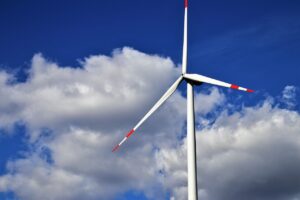THE RISE OF RENEWABLE ENERGY TECHNOLOGIES

The global energy landscape is undergoing a transformative shift as renewable technologies accelerate toward displacing fossil fuels. Driven by technological innovation, policy support, and economic viability, renewables now account for over 30% of global electricity generation, with projections suggesting they’ll surpass coal by 2025. This progress stems from breakthroughs in solar efficiency, wind capacity expansion, and energy storage systems, supported by nations prioritizing decarbonization and industrial reshoring.
Solar Energy Dominance and Technological Leaps
Solar photovoltaic (PV) technology has emerged as the fastest-growing renewable source, with global capacity surpassing 580 GW by 2023. Key advancements include:
Perovskite solar cells: Achieving lab efficiencies exceeding 30%, these cells offer lower production costs and flexibility for applications like building-integrated PV25.
Thin-film technologies: Cadmium telluride (CdTe) and copper indium gallium selenide (CIGS) panels now provide competitive alternatives to silicon, reducing material costs by 82% since 2010.
Cost reductions: Utility-scale solar costs dropped to $0.03–0.06 per kWh, making it the cheapest new-build electricity source in most regions.
The International Energy Agency (IEA) estimates solar will meet half of global electricity demand growth through 2025, with China leading installations at over 250 GW annually.
Wind Energy’s Resurgence and Offshore Expansion
After years of solar dominance, wind power is experiencing a revival, particularly in offshore projects:
Asia-Pacific leadership: China accounts for 60% of global wind turbine production, driving down costs through economies of scale. The country aims for 1,200 GW of renewable capacity by 2025, five years ahead of schedule.
Offwind growth: Europe and the U.S. are accelerating offshore deployments, with floating turbine prototypes exceeding 15 MW capacity. The U.K. and Germany plan to add 50 GW of offshore wind by 2030.
Technological innovations: Bladeless turbines and AI-optimized designs are improving capacity factors, with modern turbines achieving 45-50% efficiency compared to 30% a decade ago.
Global wind capacity is projected to reach 1,500 GW by 2025, driven by $1.3 trillion in investments since 2020.
Energy Storage: Enabling 24/7 Renewables
Addressing intermittency challenges, storage technologies are revolutionizing grid reliability:
Technology Advancements (2024–2025) Impact
Lithium-ion Costs降至$80/kWh (-70% since 2020) Supports 6-hour grid-scale storage
Flow batteries 10,000-cycle lifespan achieved Enables multi-day energy shifting
Green hydrogen Electrolyzer costs down 45% Heavy industry & long-term storage
The U.S. and EU are deploying 60 GW of storage projects by 2025, with AI-driven energy management systems optimizing charge/discharge cycles.
Policy and Economic Drivers
Three key factors are accelerating adoption:
Industrial reshoring: Cleantech manufacturing added 11 GW of U.S. demand by 2030, with the Inflation Reduction Act spurring $370 billion in renewable investments.
Carbon pricing: 45 nations now price emissions above $50/ton, making renewables cost-competitive against subsidized fossils.
Corporate PPAs: Tech giants like Google and Amazon contracted 40 GW of renewables in 2024 to power data centers and AI operations.
Challenges and Future Outlook
Despite progress, hurdles remain:
Grid modernization: Over $600 billion needed globally by 2030 to integrate distributed renewables.
Supply chain bottlenecks: Rare earth metals demand will grow 6x by 2030, requiring new mining and recycling solutions.
Policy uncertainty: Potential IRA rollbacks in the U.S. and shifting EU regulations could delay projects.
The IEA’s Net Zero Scenario requires 15% annual renewable growth through 2030, nearly triple 2023’s rate20. With solar and wind leading, supported by storage breakthroughs and green hydrogen scaling, renewables are poised to supply 50% of global electricity by 2030—a tenfold increase since 2000. This transition, while complex, offers a viable pathway to limit warming to 1.5°C while creating 30 million energy jobs worldwide. The renewable revolution isn’t merely underway—it’s accelerating faster than most models predicted.



